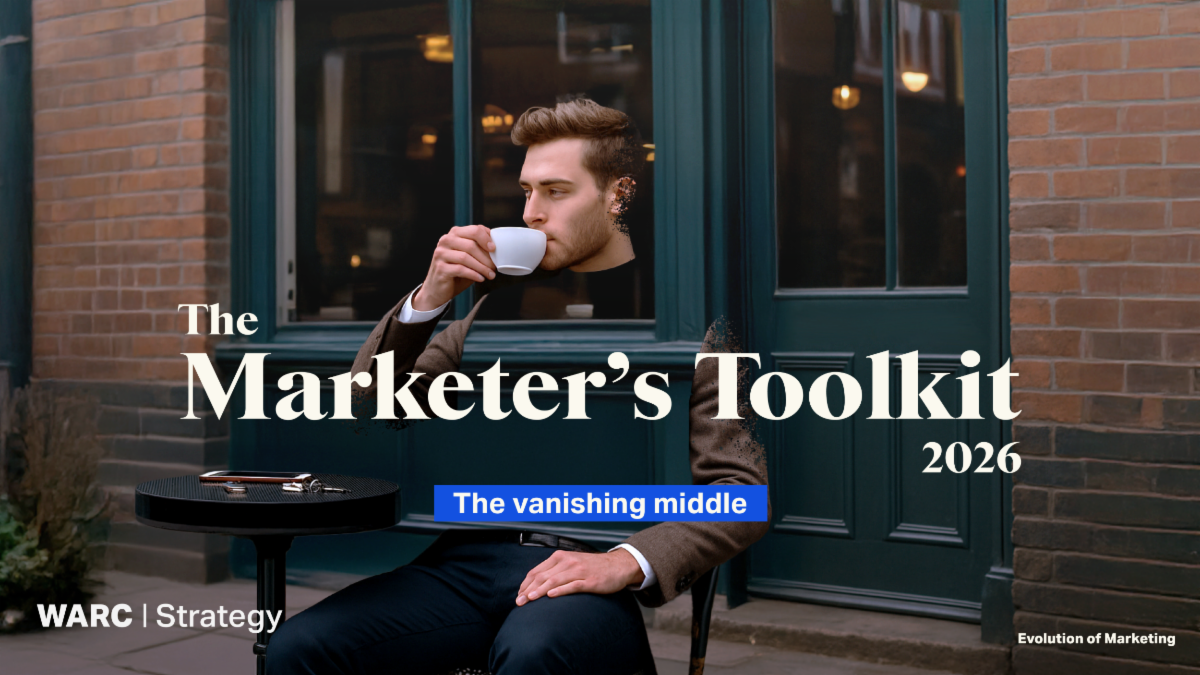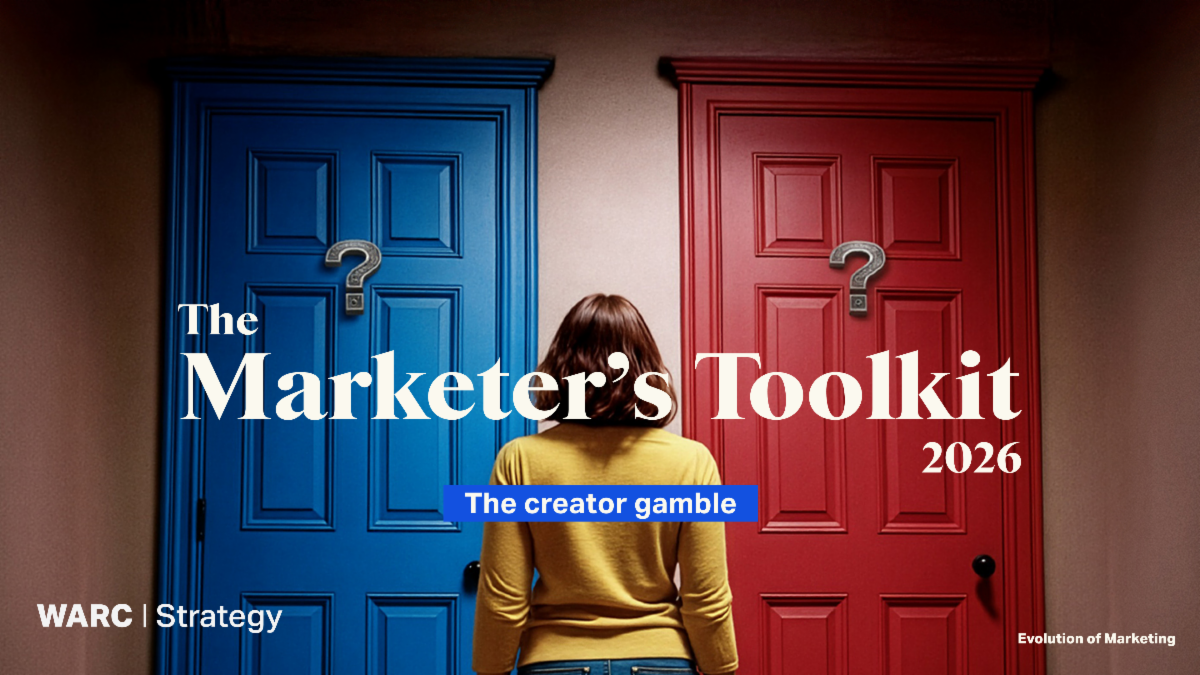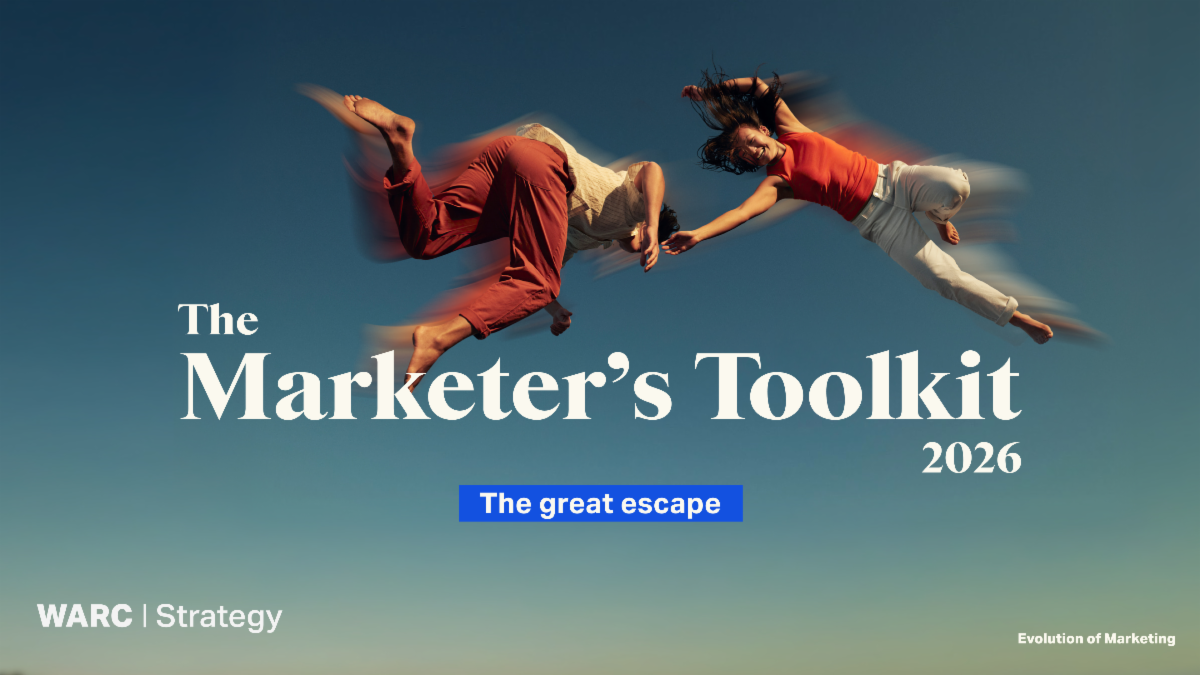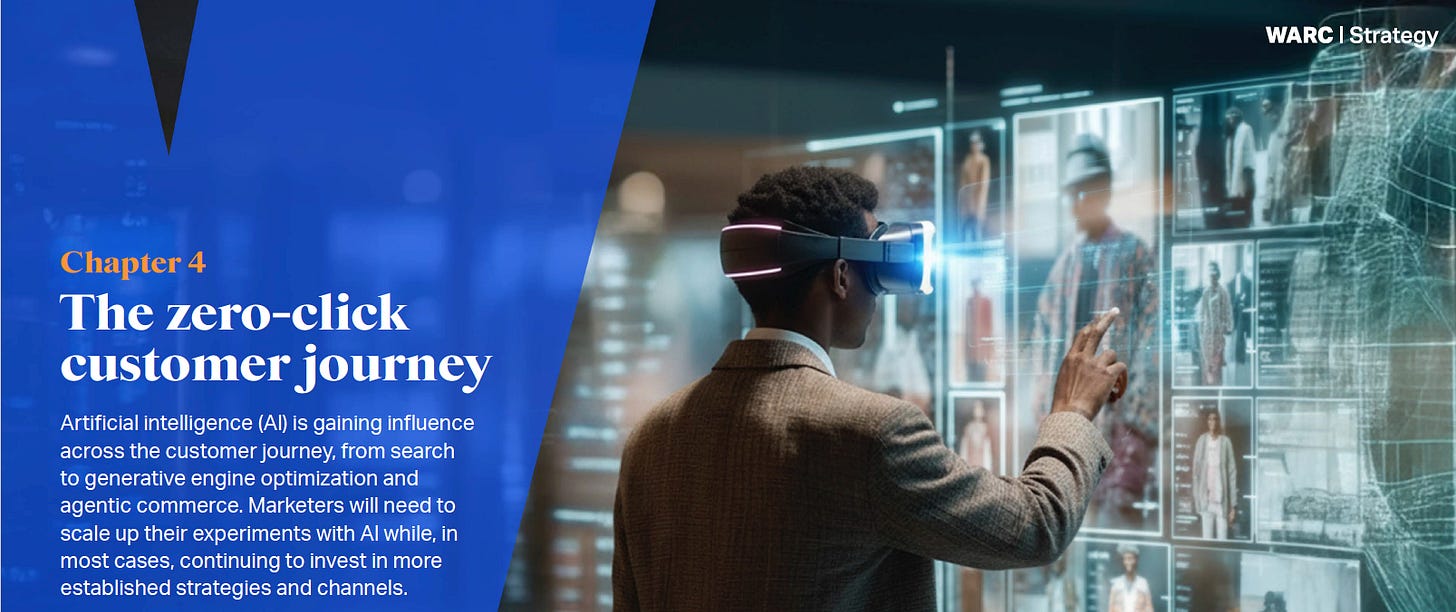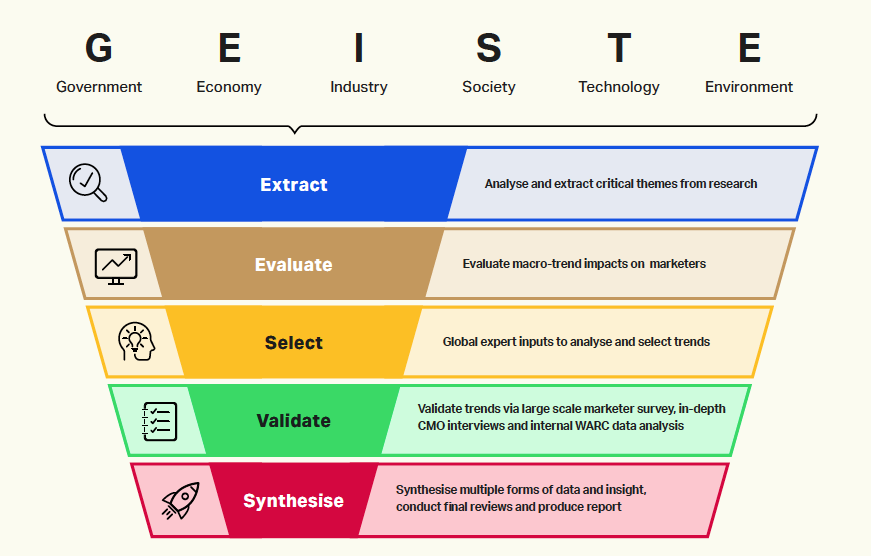The Marketer's Toolkit 2026: Finding Clarity in Chaos
Five Critical Trends Reshaping Marketing as Confidence Drops 11 Points.
Clarity in Chaos
Marketer confidence has plunged 11 points in a year. Only 54% now expect business to improve in 2026, down from 65% in 2024. The middle class is “becoming meaningless.” And AI is rewriting the rules of customer acquisition.
Welcome to 2026, according to WARC’s 15th annual Marketer’s Toolkit, which surveyed over 1,000 marketing executives to identify five trends that will separate winners from losers in the year ahead. Despite the pessimism, there’s a paradox: ad spend is forecast to grow 8.1% to $1.27 trillion.
“Going into 2026, the only certainty is that there will be uncertainty. Unpredictable tariffs, geopolitical threats, and economic instability are impacting consumer spending, lifestyles and ambitions. Our survey found marketer optimism is down 11 points from last year, with 54% of marketers saying they expect things to be better next year, versus 65% surveyed in 2024. But understanding consumer shifts and how to adapt quickly to cater to them could create new opportunities for brands in 2026.”
Aditya Kishore, Insight Director at WARC
1. The Vanishing Middle
Here’s the most uncomfortable truth in the report: 73% of marketers agree the term “middle-class” is becoming meaningless.
The numbers are stark. America’s top 10% now account for half of all consumer spending. Meanwhile, one in five middle-income households spends more than they earn. The traditional marketing playbook build your brand in the middle, then stretch up and down—no longer works because the middle is hollowing out.
The challenge intensifies for younger generations. Whilst baby boomers’ children inherit $84 trillion in the largest wealth transfer in history, most younger millennials and Gen Z battle negative wealth as debt stifles life chances. Interest in university education and climbing the corporate ladder is declining a crisis of ambition that will further limit opportunities.
Two Strategic Responses
Premiumisation: Brands are repositioning upscale. The automobile industry now sells fewer, more expensive cars. This trend extends across house paints, airlines, and beauty care.
“I think that people can really tell the difference when things are crafted beautifully. We are a premium brand. We cost a bit more. And especially in the world we’re heading into, I think craft can become a really powerful differentiator for brands.”
Brent Smart, CMO of Telstra
Value Reframing: Understanding “affordability tension” the gap between what consumers want and can afford. Some brands use “barbell” pricing with both budget and premium options.
“Chili’s has always been a place for everyone. Our ‘barbell’ pricing strategy offers everyday value and premium options, keeping the brand relevant across the spend spectrum. Showcasing this approach in our marketing has kept this balance visible to our guests, helping Chili’s grow even in a challenging economic environment.”
George Felix, SVP & CMO of Chili’s Grill & Bar
2. The Creator Gamble
Call it the $10 billion question: 61% of marketers plan to increase influencer spending in 2026, yet most can’t prove it works.
Creator ROI is notoriously volatile. Engagement can vanish overnight. Brand safety remains a minefield. But marketers feel trapped skip creators, and you lose access to younger audiences. The tension between needing reach and demanding accountability is reaching breaking point.
3. The Great Escape
In a world weighed down by “polycrisis,” consumers seek escapism. For enhanced experiences, marketers pursue both digital channels (78%) and in-person events (74%). Brands can help consumers move beyond doomscrolling by creating emotionally immersive experiences that transport people out of everyday stresses and restore human connection.
4. The Zero-Click Customer Journey
Google is over. Well, not quite—but the writing’s on the wall. Only 11% of marketers aren’t worried about AI’s impact on search, and 24% are already pivoting from SEO to GEO (generative engine optimisation).
The nightmare scenario: consumers ask AI for recommendations, AI provides answers, transactions complete and your brand never gets a click. The “zero-click” future could make websites optional.
What’s the play? Most marketers are hedging: experiment with AI whilst doubling down on brand building. Because if consumers never visit your site, brand recognition becomes everything.
5. The Reset of Consumer Milestones
53% of marketers believe segmentation based on age, income, social class, and family structures isn’t really effective anymore. Traditional milestones—marriage, children, home ownership, university—are being delayed or forgone entirely by younger generations.
Brands must re-evaluate category entry points. Rather than demographic proxies, marketers need deeper insights into individual values, priorities, and life circumstances. What drives purchase decisions when traditional triggers no longer apply?
From Uncertainty to Opportunity
So what does all this mean? Strip away the methodology and surveys, and you’re left with a simple truth: the old rules are breaking.
The middle market that powered decades of growth is fragmenting. The platforms that delivered customers are being intermediated by AI. The life milestones that triggered purchases are being abandoned. Even the influencers brands bet billions on can’t prove they work.
Yet half of marketers remain optimistic. Why? Because disruption creates opportunity—but only for those who adapt quickly.
The playbook for 2026:
Stop pretending the middle market exists - Go premium or go value, but pick a lane
Treat brand as infrastructure - When AI controls distribution, brand recognition is your moat
Segment by values, not demographics - Age and income no longer predict behaviour
The £1.27 trillion question: which marketers will find clarity in this chaos, and which will keep optimising for a world that no longer exists?
The Marketer’s Toolkit 2026 demonstrates that finding clarity amidst chaos isn’t about predicting the future with certainty, but understanding the fundamental forces reshaping consumer behaviour. For marketers who can grasp these shifts, 2026 offers genuine growth potential.
The Marketer’s Toolkit 2026 is available to WARC subscribers. Related Evolution of Marketing reports include The GEISTE Report, The Voice of the Marketer, and Future of Media. Visit warc.com/contact-us.
This email is a shorter version of an article which is available in The Media Stack archive https://www.themediastack.co.uk/p/the-marketers-toolkit-2026-navigating
What do you think? Which of these five trends will have the biggest impact on your marketing strategy in 2026? Reply to this email or leave a comment below.





